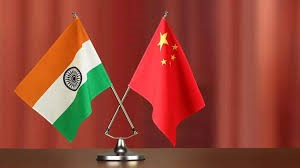Description

Disclaimer: Copyright infringement not intended.
Context
- India Tuesday rejected China’s renaming of some places in Arunachal Pradesh, and said that assigning “invented” names does not alter the reality that the state “is, has been, and will always be” an integral part of India.
Details
- India’s sharp response came after the Chinese government announced names for 30 more places in Arunachal Pradesh which it claims as the southern part of Tibet.
- The Chinese Ministry of Civil Affairs released the fourth list of standardized geographical names in Zangnan, the Chinese name for Arunachal Pradesh, which Beijing claims as part of south Tibet.
- The first batch of the standardised names of six places in Arunachal Pradesh was released in 2017 while the second batch of 15 places was issued in 2021.
- In April last year Beijing released the third list of standardised names of 11 places in Arunachal Pradesh.
Key Points about the Standardised maps of China:
- Territorial Claims:
- The map includes China's territorial claims in Arunachal Pradesh and the Aksai Chin Region.
- The map also contains the "Nine-Dash Line," which is a contentious demarcation that covers the entire South China Sea and highlights Beijing's claims over the South China Sea.
- The map also shows the tenth dash line which highlights Beijing’s claims over Taiwan island.
- Renaming of Places:
- China's release of the new map contains the new names of places in Arunachal Pradesh, including areas close to Itanagar and Tawang.

Disputes between India and China
- Border Dispute:
- The most significant and long standing issue between India and China is their unresolved border dispute, primarily focused on the Line of Actual Control (LAC) in the Himalayas.
- The border between the two nations is undemarcated and stretches over 3,488 kilometers, leading to frequent tensions and occasional military standoffs.
- Arunachal Pradesh:
- China claims the Indian state of Arunachal Pradesh as part of its territory and refers to it as "South Tibet." This claim has led to diplomatic tensions between the two countries.
- Tibet Issue:
- India provided asylum to Tibetan spiritual leader Dalai Lama and a large number of Tibetan refugees. This stance has been a point of contention with China, which sees Tibet as a sensitive internal matter.
- Strategic Influence:
- Both countries are vying for strategic influence in Asia and beyond, leading to competition in areas such as infrastructure development, trade agreements, and military alliances with neighboring countries.
- Trade Imbalance:
- There's a significant trade imbalance between India and China, with India importing far more goods from China than it exports. This trade gap has economic implications and has led to discussions about fair trade practices.
- Maritime Disputes:
- Although not as prominent as land-based disputes, India and China have differences in the maritime domain, especially in the Indian Ocean region where both countries seek to expand their naval presence and influence.

- Military Standoffs:
- 1962 Sino-Indian War: The border dispute has led to a number of military standoffs and clashes, including the 1962 Sino-Indian War. Both countries have made efforts to manage the tensions, with various agreements and protocols aimed at maintaining peace along the border.
- Recent Faceoffs: The most serious recent episodes of conflict were in Galwan Valley in Ladakh in 2020 and in Tawang in Arunachal Pradesh in 2022.
- Observers on both sides of the border—the Line of Actual Control (LAC)—agree that the number of serious military confrontations has increased since 2013.
- Global Diplomacy:
- India's growing ties with countries like the United States and Japan, seen as strategic partners, have sometimes been viewed with suspicion by China, impacting the overall diplomatic relations between the two nations.
These disputes and issues contribute to a complex and sometimes tense relationship between India and China, with efforts ongoing to manage and resolve these challenges through diplomatic channels.
Source: https://www.thehindu.com/news/international/ukraine-says-russia-has-fired-five-zircon-missiles-at-kyiv-in-2024/article68017512.ece
|
PRACTICE QUESTION
Q. Border management is a complex task due to difficult terrain and hostile relations with some countries. Elucidate the challenges and strategies for effective border management.
|












